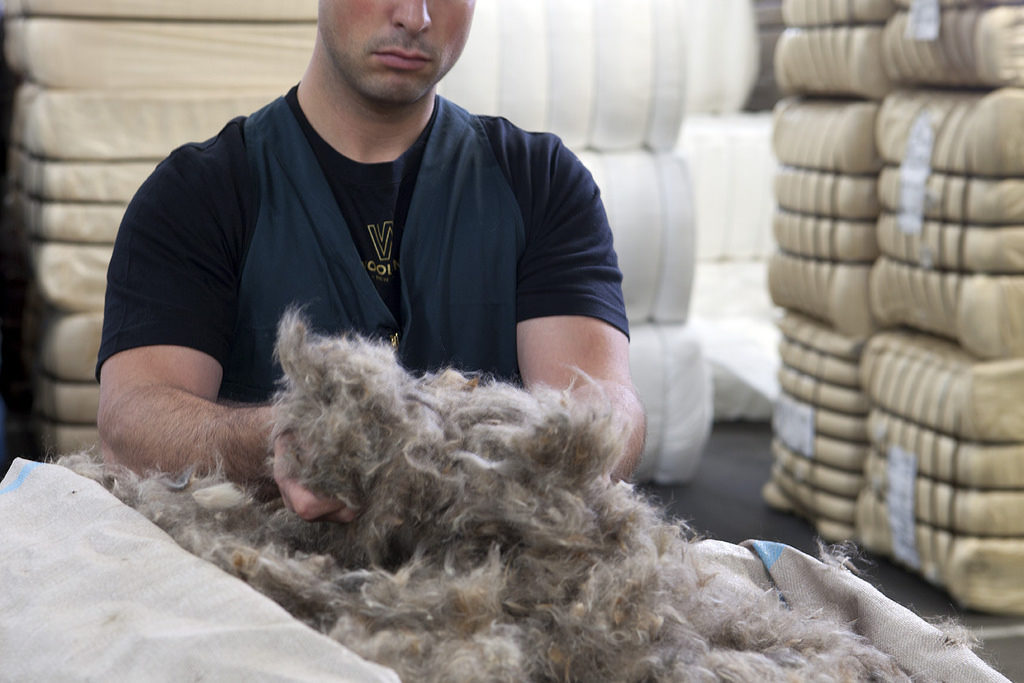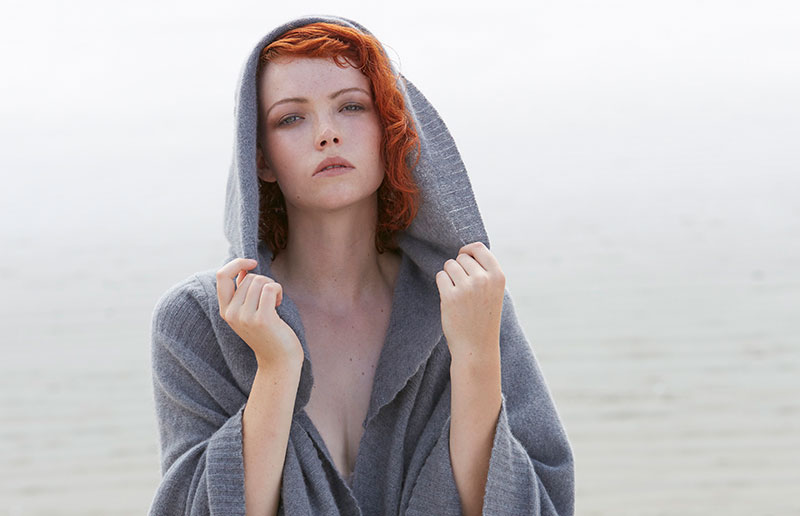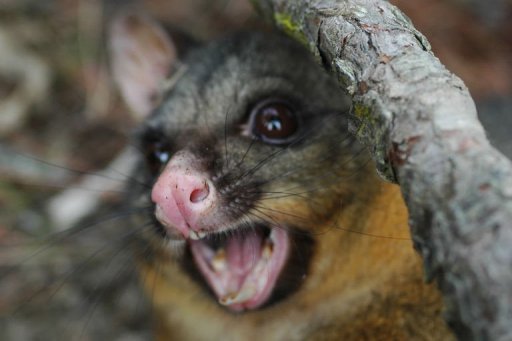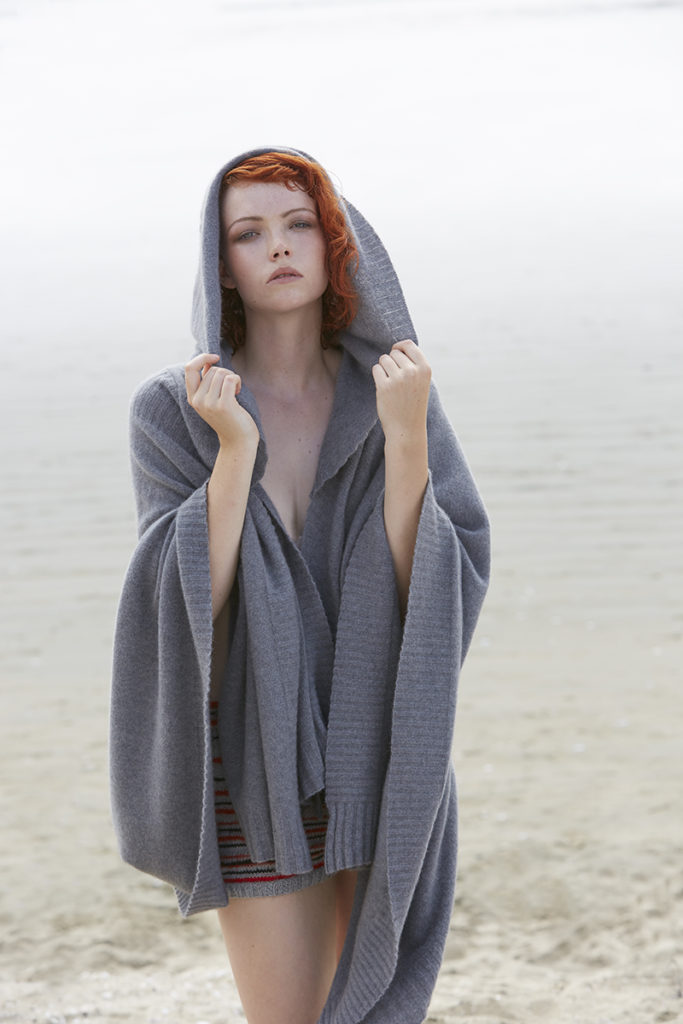More than ever, fashion brands are evaluating their use of sustainable and ethical practices, showing that consumers are asking about what really happens in the making of their clothes. This is leading to discussions and education about where clothes come from, what they are made out of and the triple bottom line, measuring the environmental, economical and social dimensions of sustainability. Recently, The Duchess of Cambridge, Kate Middleton was photographed during her family ski trip on the French Alps wearing luxury brushtail possum fur mittens. Is there more to learn about this New Zealand fibre?
The Brushtail possum was introduced to New Zealand to establish a fur trade in the 19th century. 200 years on, the possum has become a national pest, endangering native flora and fauna. Manufacturers and fashion brands see the potential for the fur to be put to a positive end use, in new and innovative ways. The issue of sourcing ethical and sustainable fur is complicated and both sides of the discussion are committed to their ideas. Could the use of natural, wild pest fur that contributes to conservation efforts be a more sustainable source of fur than other options? The use of faux-fur for example can be controversial as it petroleum based, taking a long time to biodegrade and lacking in the warmth properties of natural furs.
How can we measure sustainability?
The word sustainable has been increasingly bandied about as consumers ask more about the origin of their products. Sustainability is a word and a theory that has come to encompass people, their environment both locally and globally as well as financial viability. If something is described as sustainable, it is able to be maintained without disrupting a balance in our communities, environment and financial economy.
In America in the 1990’s, John Elkington developed a measure of sustainability for corporate companies. The framework, named the triple bottom line (TBL) measures not only a company’s economic performance, but also looks at the social and environmental dimensions, allowing the company to evaluate their sustainability efforts. The TBL can be used as a tool to look the impacts on the environment including plant and animal species, review the contribution to communities and regions, including education, health and wellbeing and evaluate cash flow, employment and growth opportunity. Once the environmental, economic and social factors are evaluated, companies can then monitor and develop their sustainability.
The NZ Fur Industry – how can it contribute to NZ wildlife protection?
The decision to introduce the Brushtail possum to New Zealand in the 19th Century was obviously done without the education that we have today. Humans brought the possums to NZ from Australia 200 years ago, so in the present, we need to take responsibility of the harm caused and protect defenceless native animals and plants. It’s not possible to un-introduce them so the reality is we have to work with the situation. With no natural predators and the abundance of food in New Zealand, the omnivore marsupials have reached populations of up to 30-50 million, creating a serious problem for New Zealand’s precious ecology.
The sheer quantity of possums in New Zealand and their breeding rates, mean the fur industry will never eradicate them completely. However, a stronger relationship between NZ’s Department of Conservation (DOC) and trappers for the NZ fur industry can be an effective way to keep the numbers down in controlled areas and buffer zones. Lou Sanson, Director General of Conservation says the fur industry can delay possum re-invasion in an area by two to three years, which would enable the native birds and plants in the area valuable time to recover. It is also a cost effective way of reducing the numbers – the trappers earn their income from selling the fur, so the more possums eradicated by trapping, the less money spent on government pest control schemes, saving NZ taxpayer money.
While there is developmental work in progress to create a reproductive vaccine to lessen the fertility of possums by up to 80%, it is not yet viable for conservation efforts. The possums are continually growing in number so the wild pests are currently controlled using trapping and aerial poison drops on inaccessible areas. The fur is recovered by possum hunters paid per kilo of fur, and there are laws in place to ensure the types of traps and poisons used are regulated. The NZ Fur Council website states “Hunters and trappers must adhere to laws including the Animal Welfare Act 1999. Trap users have a duty of care for the welfare of the animals they capture.” The NZ Fur Council agrees with the International Fur Trade Federation that animals should be killed quickly and outright, and that traps must be non-toothed and checked daily. On DOC land, the traps must be set on trees, off the ground to stop flightless birds from being caught accidentally.
The NZ Brushtail possum fur recovery efforts has grown into a $130 million industry, providing a source of employment especially in rural communities. The trappers are paid fairly by prices based on demand, which in turn contributes to their family’s wellbeing and security, local community and to the country at a national level. They are often self employed – working at preferred times of the day and year to get effective use of their time and resources.
Why is the brushtail possum fur industry growing?
As well as contributing to conservation efforts, Brushtail possum fibre has an incredibly soft handle and a hollow construction, making it 35% warmer than cashmere. It naturally repels moisture and odor and has low pilling qualities, keeping the garment looking new for longer and garnering possum fur more popularity amongst style icons and people of influence around the world.
Prince William and Catherine, Duchess of Cambridge (Kate Middleton) were photographed on a ski holiday earlier this year, Kate wearing possum mittens from niche UK brand Alexski, with fur sourced from New Zealand. The owner of Alexski, Alexandra Bennet, explained Kate’s mother was a loyal customer and bought the gloves for the Duchess as a gift. Bennet said the possum fur lined gloves were twice as warm as fox or mink and spoke of the hollow nature of the fibres. ‘It traps the air in it which keeps the fur at room temperature, whereas other furs can feel quite cold’. The full article can be read here.
Possum fur is also used for blankets, cushions, fashion accessories and trims and increasingly, in blended yarns used in knitwear and woven items. Woolyarns, a family owned yarn spinning mill in New Zealand has developed yarn blending Brushtail possum down with other quality fibres such as fine merino, cashmere and mulberry silk, to create luxury yarns used both locally and internationally. Perino by Woolyarns is marketed alongside luxury yarns made from cashmere, silk and alpaca and is predominantly used in knitwear, even appearing on the catwalks in Paris. Woolyarns is catering to fashion designers wanting to incorporate innovative fabrics in their collections, that have a unique story.
Sustainability, ethics and fashion design
Attitudes toward consumption are changing, with customers really looking into and caring about the manufacture story behind anything they buy. Fashion is no exception. Ethical Fashion rebuts fast, cheap fashion and encourages fair wages and working conditions for the whole supply chain, supports sustainable livelihoods, animal rights and developing eco friendly fabrics. Based on Brundtland Commission’s description, the Ethical Fashion Forum describes sustainability as meeting the needs of the present without compromising the ability of future generations to meet their needs.
Why not use faux-fur instead? Fur alternatives are not as sustainable as they seem despite being promoted by activists and anti-fur designers such as Stella McCartney, Vivienne Westwood and Calvin Klein. Although advancements have been made to create faux-fur fabrics that look and feel as luxurious as real fur, the materials they are made out of are detrimental to our environment. Faux fur is generally made by extracting polyacrylates from petroleum – a non-renewable resource, which is energy intensive and pollutes ecosystems, creating an end product that will take up to 1000 years to decompose. Natural furs used in the fashion industry however will biodegrade within 6 months to 1 year. If that’s not enough – faux-furs are often used in fast-fashion trending garments, which is completely the opposite to the use of natural animal furs, that are high quality investment pieces often passed down through generations.
Innovative designers are adopting thoroughly considered alternatives that ensure fur is sourced ethically and sustainably. Vermont fashion company Petite Mort, creates fabulous garments out of fur found from roadkill. Founder Pamela Paquin saw a use for the 365 million animals killed on the roads every year. She makes unique one of a kind garments including neck cuffs, hats, hand muffs and gloves, but her options are limitless. Another brand, Rachel Comey sources fur from baby alpacas that die of natural causes in the harsh weather of Peru.
Other fashion designers strive to use sustainable and ethical practices in their work where they can. Izzy Lane creates yarns and garments from their own sheep, rescued from slaughter and allowed to live out their natural lives. Kordal New York uses natural fibres sourced from mills that they have close relationships with to ensure they are using ethical practices throughout the supply chain. Everlane asks questions and develop relationships with their factories, ensuring they can give full transparency of the standards in their manufacturing. Reformation has committed to environmental practices through their whole philosophy, from their sourcing to their stationary to their waste to their light fixtures. Isobel and Cleo knitwear is handmade using organic and sustainable yarn as much as possible. There are thousands of other brands that are catering to customer desire to be conscious about their consumption, making it easier to buy timeless, quality garments over fast-fashion that won’t last.
Possum fur is a readily available resource in New Zealand, that supports the livelihoods of local fur hunters and the national financial economy. There are standards set in place around the trapping and killing of the animals to ensure there is as little stress as possible. The Brushtail possum run wild in New Zealand bush so their lives before being trapped are filled with abundant feasting and natural animal behaviors. The trapping of this pest helps to lower the numbers killing New Zealand’s native wildlife, giving plants and animals time to regenerate. The fabrics created with possum fur is eco friendly, biodegrading naturally and quickly when the garments lifetime is over. The numbers of possums and their rate of breeding mean the amount of possums trapped for their fur is sustainable and as it is unlikely that they will ever be eradicated from the country, they will not be farmed for their fur.
In the case of the Brushtail possum fur we have to understand our responsibility. They were introduced by people, so it is people that need to step in and look after the natural wildlife that possums are impacting on. The animals will be killed for conservation purposes regardless therefore harvesting the fur is a viable way to lessen the numbers at no cost to New Zealand’s government and provide jobs in rural communities. If the NZ fur industry is producing fabrics that are popular, provide high quality warmth, are durable and quickly biodegrade, then perhaps Kate Middleton has good reason to wear possum fur.



